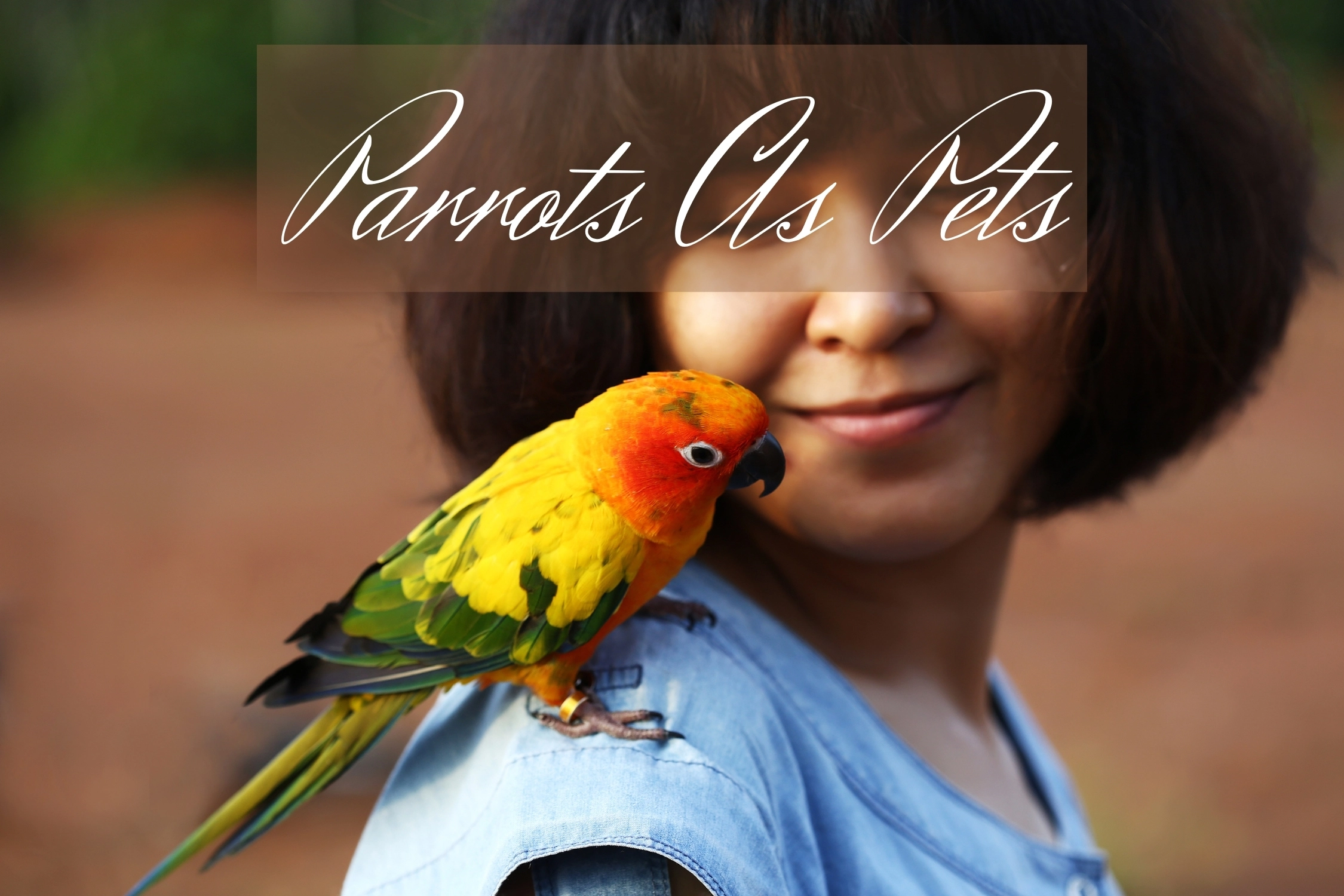Introduction to Parrots as Pets
Parrots, enchanting and vibrant, have carved a special niche in the world of pets, captivating countless hearts with their dazzling plumage and charismatic personalities. Renowned for their intelligence, playful demeanor, and ability to mimic human speech, these feathered companions stand as distinctive members of the animal kingdom, delighting households across the globe.
The Allure of Parrots
What sets parrots apart as pets is their unique combination of beauty and brains. From the small, talkative budgerigars to the majestic and colorful macaws, the diversity among parrot species offers a wide array of options for potential bird enthusiasts. The very allure of having a parrot as a companion lies in their ability to forge strong emotional bonds with their human counterparts.
Why Choose a Parrot as a Pet?
Beyond their striking appearance, parrots possess captivating personalities that make them fascinating companions. Their intelligence, problem-solving abilities, and inquisitive nature create an engaging interaction that often surprises and delights their owners. Moreover, their potential to mimic human speech adds an extra layer of amusement and closeness in the bond between parrot and owner.
A Glimpse into Parrot Diversity
Parrots are a diverse group, comprising numerous species that differ in size, coloration, temperament, and vocal capabilities. From the affectionate and talkative African Greys to the playful and colorful conures, each species brings its own unique charm and demands specific care and attention.
The Joy of Parrot Ownership
Having a parrot as a pet is not just about sharing a living space; it’s about cultivating a relationship filled with companionship, mutual trust, and understanding. The rewards of having a parrot companion extend far beyond their visual appeal; they become cherished members of the family, offering entertainment, comfort, and a profound sense of connection.
Understanding Parrot Species
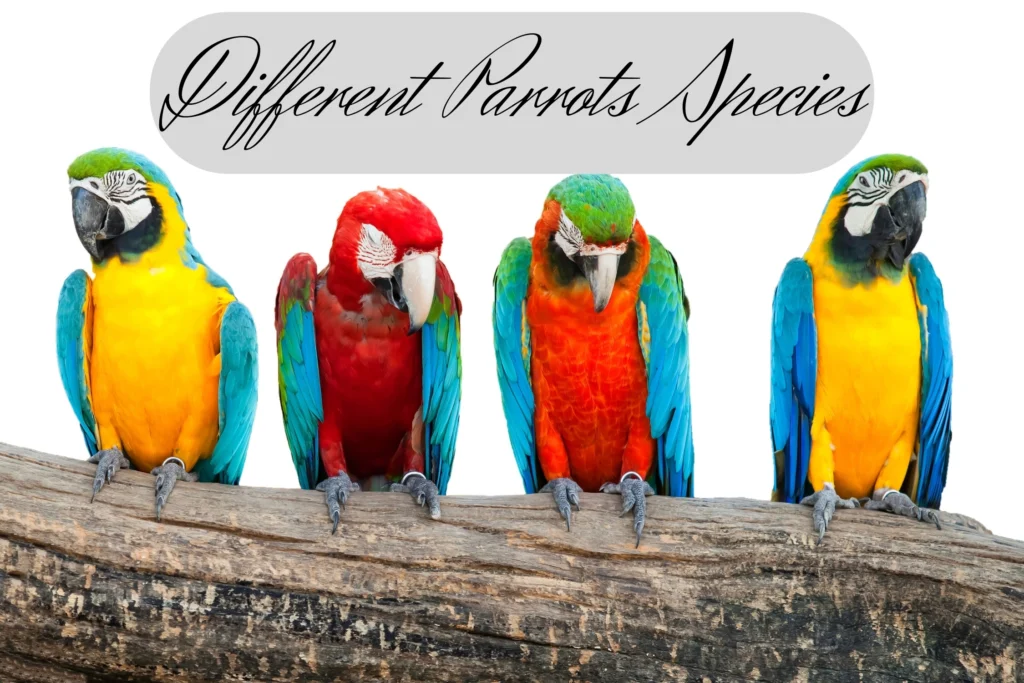
Parrots, encompassing a diverse spectrum of species, exhibit an astonishing array of characteristics, behaviors, and needs. Before delving into the specifics of each species, it’s vital to understand the broader categories and traits that define these captivating birds.
Diversity Among Parrot Species
The parrot family encompasses a wide variety of species, ranging from the small and colorful budgerigars to the grand and majestic macaws. These species showcase an incredible diversity in size, coloration, vocal abilities, and temperament. Understanding this diversity is crucial when considering a parrot as a pet, as each species has its unique set of requirements and personality traits.
Popular Parrot Species as Pets
Several parrot species have gained popularity as pets due to their affable nature and ability to adapt to domestic environments. Among these, African Greys, Cockatoos, Macaws, and Conures stand out as common choices, each bringing distinct characteristics and charm.
Traits and Characteristics of Different Parrot Species
Each parrot species exhibits specific traits and characteristics that distinguish them from one another, influencing their suitability as pets and the type of care they require:
African Greys: Masters of Intelligence
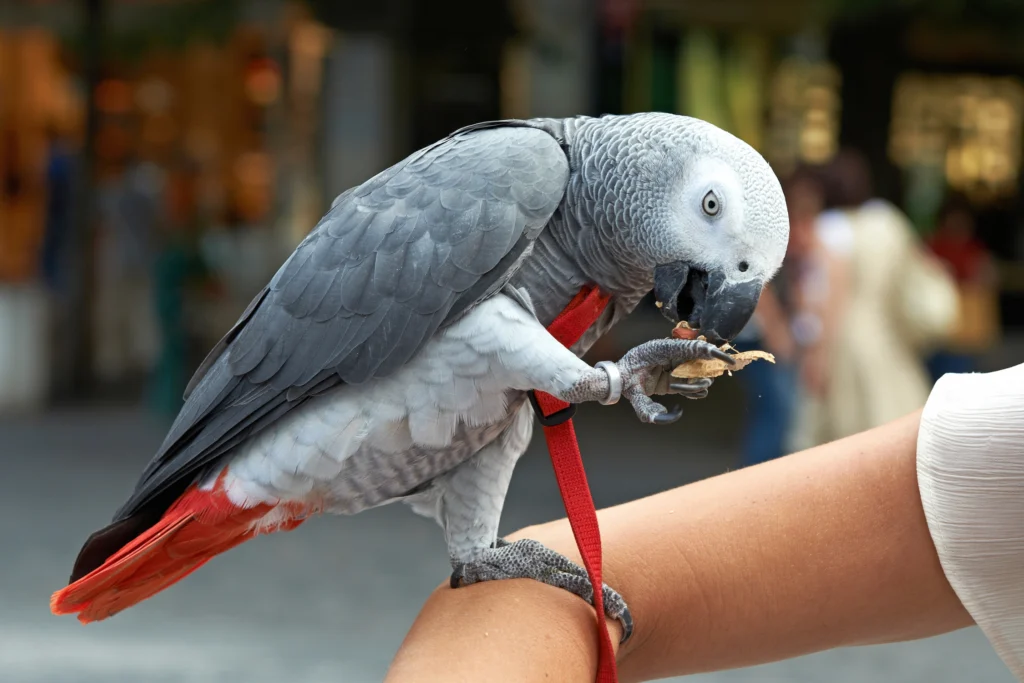
African Greys are celebrated for their exceptional intelligence and remarkable capacity for learning and mimicking speech. With their inquisitive nature and emotional depth, they form strong bonds with their owners, making them a beloved choice among parrot enthusiasts seeking an intellectually engaging companion.
Cockatoos: Affectionate and Emotional
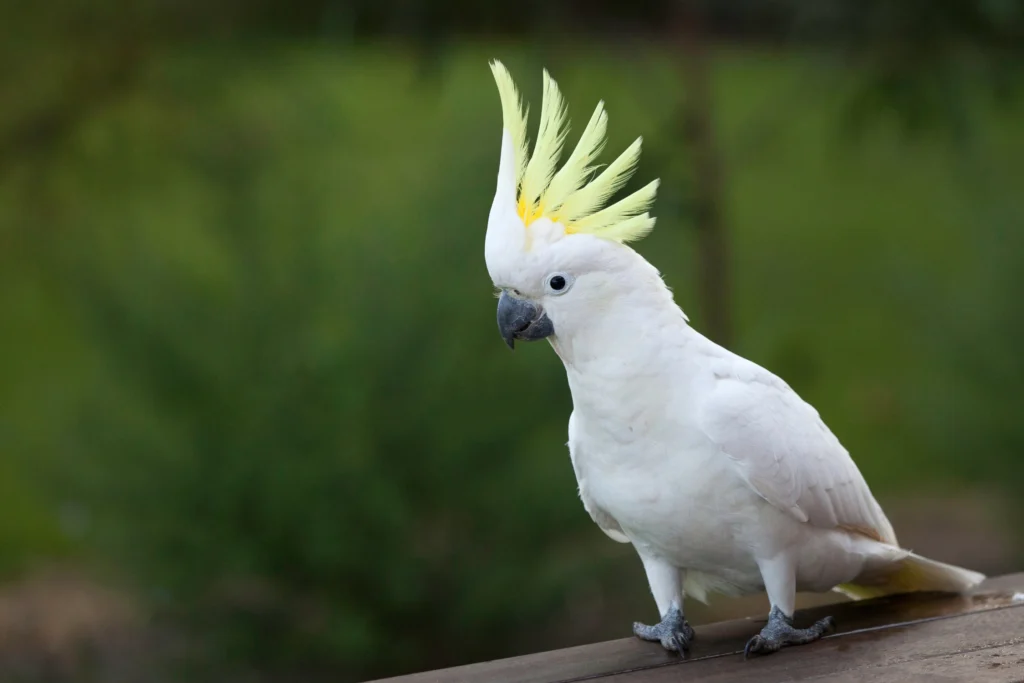
Cockatoos, known for their affectionate nature and emotional sensitivity, thrive on social interaction and form deep bonds with their human companions. However, their emotional needs require dedicated attention and consistent care.
Macaws: Majestic and Colorful
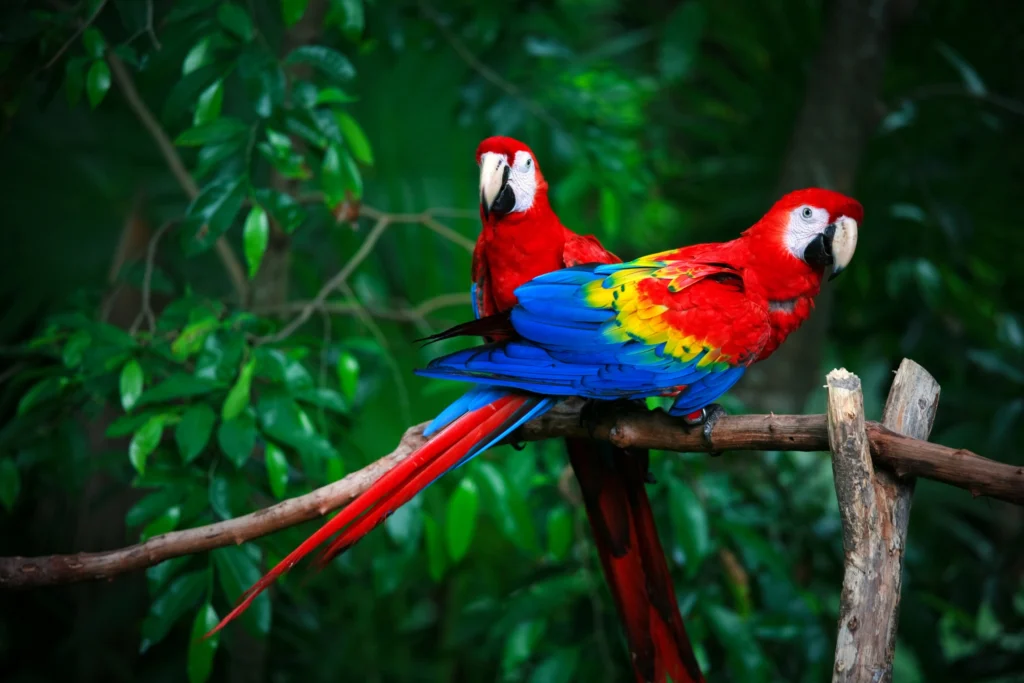
The vibrant and large Macaws capture attention with their stunning plumage and outgoing personalities. They demand spacious living environments and mental stimulation to prevent boredom, making them an ideal choice for experienced owners seeking a vibrant and striking avian companion.
Conures: Playful and Lively
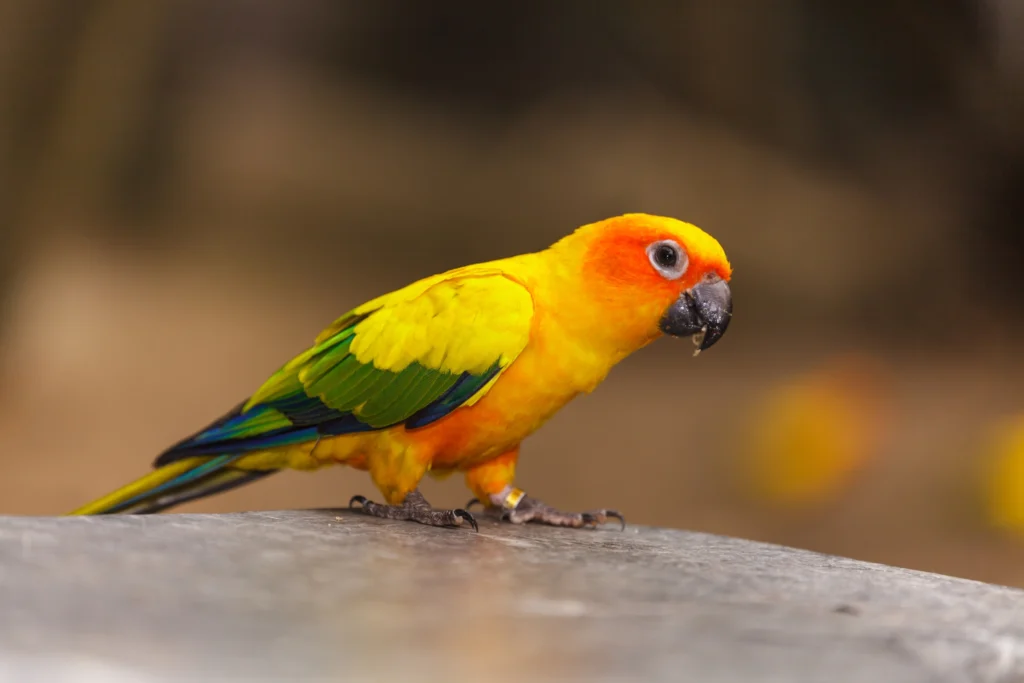
Conures are prized for their playful antics, vibrant colors, and sociable demeanor. Their energetic nature makes them a lively addition to any household, but they also require ample mental stimulation and social interaction to thrive.
Choosing the Right Parrots as Pets
Before embarking on the journey of owning a parrot, it’s crucial to consider several factors that will influence the compatibility between you and your feathered friend. Making an informed decision based on these aspects ensures a harmonious and fulfilling relationship with your avian companion.
Factors to Consider Before Getting a Parrots as Pets
- Size and Space Requirements: The size of your potential parrot companion directly correlates with the space it will require. Larger parrot species, such as Macaws and Cockatoos, need more spacious living environments both within their cages and during out-of-cage time for exercise and mental stimulation. Smaller parrots like Budgerigars and Conures may be more suitable for smaller living spaces but still require ample room to move and play.
- Time Commitment and Social Interaction: Parrots are highly social creatures that require daily interaction and mental stimulation. They thrive on social bonds with their owners and can become stressed or exhibit behavioral issues if left alone for extended periods. Consider your daily schedule and commitment to spending quality time with your parrot to ensure their mental and emotional well-being.
- Noise Level and Temperament: Parrot species vary widely in their noise levels and temperament. Some, like the Sun Conures, are particularly vocal and may not be suitable for noise-sensitive environments such as apartments. Additionally, certain species, like Amazons, can have strong personalities that may require experienced handling.
- Lifespan and Long-term Commitment: Parrots are long-lived birds, with some species living several decades. Committing to a parrot means committing to their entire lifespan, which requires careful consideration and planning for their care throughout the years.
- Matching Parrot Species to Owner Preferences and Lifestyle: Finding the right parrot species that aligns with your lifestyle, preferences, and ability to meet its specific needs is crucial for a successful and rewarding companionship.
- Lifestyle Considerations: Evaluate your daily routine, work schedule, and social activities to determine the time you can dedicate to your parrot. Some species may require more attention and interaction than others.
- Preferences and Compatibility: Research different parrot species thoroughly and consider their traits, personalities, and care requirements. Matching your preferences and lifestyle with a compatible parrot species increases the likelihood of a fulfilling relationship.
Creating a Parrot-Friendly Environment
Ensuring a conducive and stimulating environment for your pet parrot is vital for its physical health and mental well-being. From setting up the perfect cage to providing enriching activities, creating a safe and engaging living space is essential for a happy and healthy parrot.
A. Cage Setup and Size Guidelines
Choosing the Right Cage Size: Parrots require spacious cages to move around freely. The size of the cage should allow for stretching wings and hopping from perch to perch. Guidelines suggest that the cage should be at least twice the wingspan of your parrot to accommodate its movement adequately.
Bar Spacing and Material: Select a cage with appropriate bar spacing to prevent escape or injury. Opt for durable materials like stainless steel or wrought iron to withstand the powerful beaks of parrots.
Perches and Accessories: Incorporate various perch sizes and textures to promote foot health and exercise. Natural wood branches or rope perches provide variety and encourage natural behaviors.
Location of the Cage: Place the cage in a social area of your home where your parrot can interact with family members while avoiding direct sunlight, drafts, or hazardous fumes from cooking areas.
B. Enrichment Activities and Toys for Mental Stimulation
Interactive Toys: Offer a variety of toys that encourage foraging, problem-solving, and physical activity. Puzzle feeders, chewable toys, and swings engage their curious minds and prevent boredom.
- Rotate Toys Regularly: Rotate toys frequently to prevent monotony and keep your parrot stimulated. Introduce new toys periodically to maintain their interest and prevent behavioral issues.
- Training and Learning Activities: Engage in training sessions with your parrot using positive reinforcement techniques. Teaching tricks or basic commands fosters mental stimulation and strengthens the bond between you and your pet.
C. Safe and Stimulating Living Spaces for Parrots
- Natural Elements: Introduce natural elements such as plants (non-toxic to birds), branches, or safe foliage to mimic their natural habitat. These elements provide mental stimulation and a sense of security.
- Avoidance of Hazards: Remove any toxic plants, household chemicals, and hazards from the parrot’s environment. Keep electrical cords, sharp objects, and small items that can be swallowed out of reach.
- Regular Cleaning and Maintenance: Maintain a clean environment by regularly cleaning the cage, perches, and toys. This prevents the build-up of bacteria and ensures a hygienic living space for your parrot.
Parrots Diet and Nutrition
A well-balanced diet plays a pivotal role in maintaining the health and vitality of your pet parrot. Understanding and providing the right nutrition ensures your feathered companion thrives both physically and mentally.
A. Understanding a Parrot’s Dietary Needs
Variety in Diet: Parrots are omnivorous and require a diverse diet comprising seeds, pellets, fruits, vegetables, nuts, and grains. Offering a variety of foods ensures they receive essential nutrients.
Nutritional Requirements: Parrots need a mix of macronutrients and micronutrients. These include carbohydrates, proteins, fats, vitamins (A, B, C, D, E, and K), minerals (calcium, phosphorus), and amino acids.
Hydration: Fresh and clean water should be available at all times. Some parrots may enjoy bathing in a shallow dish, which helps maintain healthy feathers.
B. Balanced Diet Recommendations
Pelleted Diets: Pelleted diets provide a balanced mix of nutrients and are convenient as they eliminate the need for selective feeding. Choose high-quality pellets appropriate for your parrot’s species and size.
Seed Mixes: Seeds can be part of a parrot’s diet but should not be the sole food source. Limit fatty seeds and sunflower seeds due to their high-fat content and focus on healthier options like safflower seeds or sprouted seeds.
Fresh Fruits and Vegetables: Incorporate a variety of fresh fruits and vegetables into their diet. Offer options like apples, carrots, leafy greens, bell peppers, and berries to ensure a wide range of vitamins and antioxidants.
C. Fresh Foods vs. Commercial Parrot Diets
Advantages of Fresh Foods: Fresh foods offer a wide array of nutrients, enzymes, and hydration that may be lacking in commercial diets. They encourage natural foraging behaviors and add variety to their diet.
Considerations for Commercial Diets: High-quality commercial diets provide a balanced mix of nutrients. However, they should be supplemented with fresh foods to ensure complete nutrition and prevent monotony.
Transitioning Diets: When transitioning to a new diet, do so gradually over a few weeks to allow your parrot’s digestive system to adjust. Observe their response to the new diet and ensure they maintain their health and appetite.
Training and Socializing Our Parrots as Pets
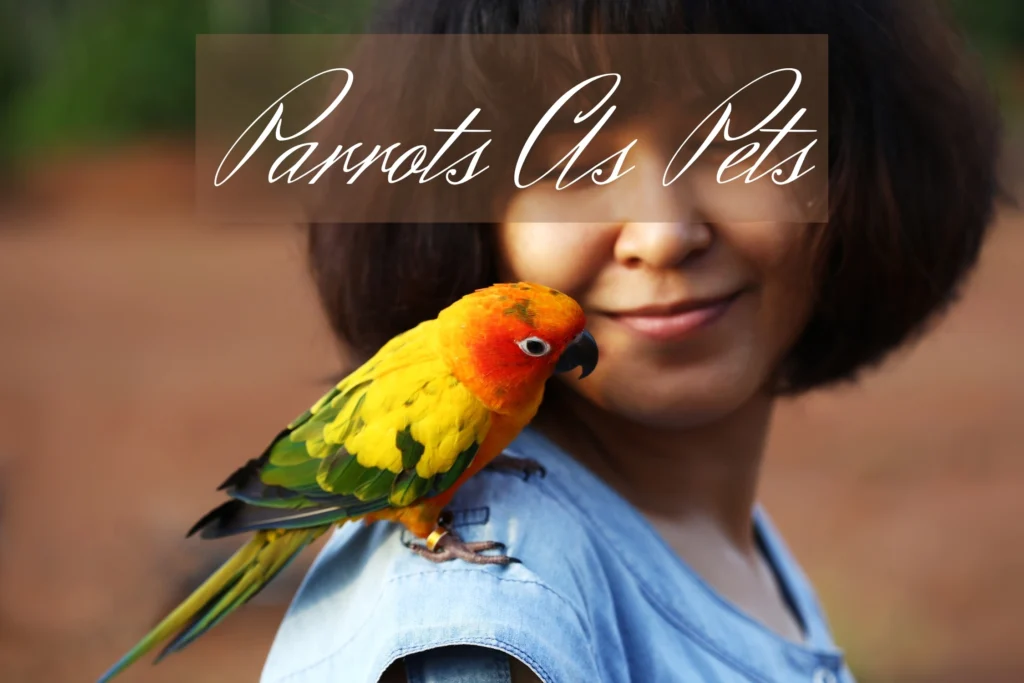
Training and socialization are integral aspects of nurturing a strong bond and fostering a harmonious relationship between you and your parrot. These practices not only encourage positive behavior but also enhance your parrot’s mental stimulation and overall well-being.
A. Importance of Training for Parrot Companionship
Communication and Understanding: Training enables effective communication between you and your parrot. Teaching basic commands fosters mutual understanding and establishes a language of cues and responses.
Behavioral Correction: Training aids in correcting undesirable behaviors, such as excessive screaming or biting, by redirecting their focus and reinforcing positive conduct.
Mental Stimulation: Engaging in training sessions provides mental stimulation, preventing boredom and encouraging your parrot’s natural problem-solving abilities.
B. Socialization Techniques for Parrots
Early Socialization: Introduce your parrot to various environments, people, and experiences from a young age. This helps them acclimate to different situations, reducing stress and anxiety in new surroundings.
Regular Interaction: Spend quality time with your parrot through play, talking, or simply being present. This regular interaction strengthens the bond and instills trust.
Exposure to Novel Experiences: Gradually expose your parrot to new objects, sounds, and people in a controlled and positive manner. This helps in desensitizing them to potential stressors.
C. Positive Reinforcement and Bonding Activities
Reward-Based Training: Use positive reinforcement techniques, such as offering treats, praise, or favorite toys, to encourage desired behaviors. Avoid punishment-based methods that may lead to fear or aggression.
Bonding Activities: Engage in activities that promote bonding, like gentle petting, playing games, or sharing mealtimes. This strengthens the emotional connection between you and your parrot.
Respect and Patience: Building a strong bond takes time and patience. Respect your parrot’s boundaries and personality, and avoid forcing interactions if they seem uncomfortable.
Health and Veterinary Care for Parrots as Pets
Maintaining your parrot’s health is crucial for their overall well-being and longevity. Understanding the signs of good health, common health issues, and the importance of regular veterinary care ensures proactive management of their health needs.
A. Signs of a Healthy Parrot
Appearance and Behavior: A healthy parrot displays bright, smooth feathers, clear and bright eyes, and alertness in their posture. They should be active, engaging in normal activities like eating, playing, and preening.
Appetite and Digestion: A healthy appetite with regular eating habits and normal droppings are indicative of good digestive health in parrots.
Vocalization and Interaction: A socially engaged parrot communicates through vocalizations, engages in play, and shows interest in its surroundings.
B. Common Health Issues in Pet Parrots
Respiratory Issues: Parrots are prone to respiratory infections due to their sensitive respiratory systems. Signs include wheezing, nasal discharge, or labored breathing.
Feather Plucking: Stress or underlying health issues may cause feather plucking, resulting in bald patches or damaged feathers.
Nutritional Deficiencies: Improper diet can lead to various health issues such as vitamin deficiencies, causing conditions like metabolic bone disease or feather abnormalities.
C. Regular Check-ups and Veterinary Care for Parrots as Pets
Routine Veterinary Examinations: Schedule regular check-ups with an avian veterinarian to monitor your parrot’s health, discuss diet, and address any concerns.
Vaccinations and Preventive Care: Follow your veterinarian’s recommendations for vaccinations and parasite prevention to safeguard your parrot’s health.
Home Care and Observation: Monitor your parrot’s behavior and physical condition regularly. Any changes in appetite, droppings, or behavior warrant prompt veterinary attention.
Behavior and Communication of Parrots as Pets
Understanding parrot behavior and communication is essential for fostering a strong bond and effective interaction with your feathered companion. By interpreting their body language, vocalizations, and establishing trust, you can enhance your relationship with your parrot.
A. Understanding Parrot Body Language
Feather Positioning: Fluffed feathers may indicate discomfort or illness, while sleek, flat feathers denote contentment. Rapid feather movement can signal excitement or agitation.
Eye and Beak Movements: Dilated pupils can indicate curiosity or fear, while rapid blinking might convey affection. Beak grinding is often a sign of relaxation or contentment.
Body Posture: A raised crest can mean excitement or curiosity, while a lowered head and body suggest submission or unease.
B. Vocalizations and Communication Methods
Varied Vocalizations: Parrots express themselves through a range of vocalizations, including squawking, whistling, chirping, and mimicry. Each sound may convey different emotions or intentions.
Mimicking and Learning: Parrots possess remarkable mimicry abilities, learning words, phrases, and even sounds from their environment. They use these skills for communication and social interaction.
Contextual Understanding: Pay attention to the context of vocalizations. Certain sounds may indicate hunger, excitement, fear, or a desire for attention.
C. Bonding and Building Trust with Your Parrots as Pets
Consistent Interaction: Spend quality time with your parrot regularly to build familiarity and trust. Engage in activities they enjoy, like gentle petting, talking, or playing.
Positive Reinforcement: Use positive reinforcement techniques, such as offering treats or praise, to reward desirable behaviors. This strengthens the bond and encourages positive interaction.
Respect Boundaries: Respect your parrot’s boundaries and avoid forcing interactions. Gradually build trust by respecting their comfort levels and allowing them to initiate contact.
Frequently Asked Question
Is a parrot a good pet?
Yes, parrots can make wonderful pets for the right individuals. They are intelligent, social, and can form strong bonds with their owners. However, they require a considerable amount of attention, care, and interaction. Potential owners should be prepared for the long-term commitment and responsibility that comes with caring for a parrot.
Are parrots good to keep at home?
Yes, parrots can be good pets to keep at home for individuals who can provide the necessary care, attention, and a suitable environment. They thrive in social settings and can bring joy and companionship to a household. However, their needs should be carefully considered, including space requirements, social interaction, and proper diet, before deciding to keep a parrot at home.
What is the best parrot to have as a pet?
The “best” parrot as a pet depends on various factors, including your lifestyle, experience level, and preferences. Some popular choices known for their intelligence and companionship include African Greys, Cockatoos, Macaws, and Conures. However, the ideal parrot for you would be one that matches your ability to meet its specific needs and suits your lifestyle and living situation. Researching different species and their characteristics can help in choosing the most suitable parrot companion for you.
What is the lifespan of a pet parrot?
The lifespan of a pet parrot varies significantly among different species. Generally, smaller parrots like Budgerigars (Budgies) may live around 10-15 years, while larger species such as Macaws and Cockatoos can live for several decades, with some even reaching 60 to 80 years or more in optimal conditions. Proper care, nutrition, and a nurturing environment contribute to a parrot’s longevity.
Can parrots be potty trained?
Yes, parrots can be trained to some extent for potty habits. Some parrot owners have had success in training their birds to relieve themselves in designated areas within their cages or using specific perches. However, it requires patience, consistency, and understanding of your parrot’s behaviors. While it’s possible to encourage potty training in parrots, it might not be as reliable or consistent as with some other pets.
Conclusion
In concluding our exploration into the world of parrots as pets, it’s evident that these vibrant and intelligent birds make remarkable companions. Let’s recap the essential aspects discussed and highlight the joys and responsibilities of having a parrot companion.
From understanding the diverse range of parrot species to creating a parrot-friendly environment, providing a balanced diet, and emphasizing training and healthcare, we’ve uncovered the critical elements required for responsible parrot ownership. Selecting the right parrot, ensuring a nurturing environment, and offering proper care are fundamental for a fulfilling relationship with these fascinating birds.
Owning a parrot is not merely about companionship; it’s a commitment to a life-long bond. Responsible ownership entails continuous education, dedication to meeting their needs, and considering adoption or rescue to offer a loving home to parrots in need. It’s a commitment to their well-being, ensuring they live healthy, happy lives as valued members of our families.
The joy of sharing life with a parrot extends beyond mere ownership. These intelligent beings offer emotional connections, endless entertainment, and an opportunity for mutual learning and enrichment. Witnessing the bond deepen, building trust, and experiencing their unique personalities is a rewarding and cherished journey.
In conclusion, embracing the joys and responsibilities of parrot ownership is an enriching experience. Let’s approach it with love, respect, and a commitment to providing the best care for these incredible companions. May the bond between parrots and their human companions continue to flourish, bringing mutual happiness and companionship for years to come.

